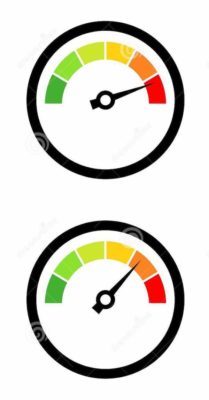To Improve Lead Conversion You Need 2 Speeds





by Tony Vidler ![]()
![]()
![]()
 Every lead is gold, and ideally every lead would result in conversion to a client. The conversion rate really is often the difference between getting a good return on your prospecting and marketing efforts, or perhaps getting no return at all.
Every lead is gold, and ideally every lead would result in conversion to a client. The conversion rate really is often the difference between getting a good return on your prospecting and marketing efforts, or perhaps getting no return at all.
The short cut to better conversion is often a simple matter of speed. Speed of response. And then speed of engagement. Even without improving the skills or the way you engage with prospects, the speed in which you do so can by itself dramatically lift the proportion of leads converted into clients.
“Firms that tried to contact potential customers within an hour of receiving a query were nearly seven times as likely to qualify the lead (which we defined as having a meaningful conversation with a key decision maker) as those that tried to contact the customer even an hour later—and more than 60 times as likely as companies that waited 24 hours or longer.”
That observation was made in an excellent short article by Harvard Business Review and it reinforces “the need for speed” as Maverick would say. They also observed:
“Nonetheless, our research indicates that many firms are too slow to follow up on these leads. We audited 2,241 U.S. companies, measuring how long each took to respond to a web-generated test lead. Although 37% responded to their lead within an hour, and 16% responded within one to 24 hours, 24% took more than 24 hours—and 23% of the companies never responded at all. The average response time, among companies that responded within 30 days, was 42 hours”
Anecdotal evidence suggests that for many financial services professionals today a lead doesn’t turn into a customer until after the fifth contact. It seems from what I see and hear that about 75% of new customers for financial advisers take 5 or more contacts before they decide to engage the adviser.
That appears to be a consistent experience, yet, the proportion of advisers who have a process of engagement and follow through that is professional yet quietly persistent and patient would appear to be in the minority.
Some of the “old sales school” thinking still remains in this respect. There is a tendency to think that it is just a matter of fact that only 20% (or whatever) of any leads generated will turn into clients. It is accepted that perhaps 80% won’t. As a result, many practitioners think that one, or perhaps two, calls to a new lead are enough to:
1. generate interest in the advisers offering
2. convince the customer of the advisers value proposition
3. engage the customer and build initial trust
4. qualify the customer and establish basic needs
5. establish a long-term professional advice relationship.
I suppose that is perhaps true for 20% of the leads. But not the other 80% who are still good leads and can be converted with patience. There is a need to drop the old school thinking (if indeed you still have it) and look at it from a different perspective.
Put yourself in the prospects shoes for a moment: you express interest in finding out more about a particular thing….your experience is that usually it will take more than a day for a human being to follow through and talk to you. When that eventually happens, something like 75% of the time the person following up wants you to take an immediate action or buy something pretty much now…when you are not even really convinced yet that either this person or their company’s solutions are the right thing for you.
Guess what happens most of the time then:
There is a simple solution to this for the smarter marketer: Leads need 2 speeds.
First gear: Go fast. When your marketing or prospecting produces a lead (someone who may be a potential client), contact them as soon as possible. Preferably within the hour – that alone will put you in front of two-thirds of your competitors to begin with. Speed of initial response will have a profound impact upon conversion rates just by itself.
Second Gear: Go slow. That first contact is mostly about acknowledging the expression of interest and establishing HOW you can help the prospect. Then begins the process of engagement and assisting the prospect to become a customer. This is when slowing it down will increase conversion rates. Allowing the consumer to drive the engagement pace, or the buying journey timetable if you prefer, increases the proportion of them who will choose to do business with you.
There is an absolute need for speed at the outset….but it is vital that you ease off the throttle quickly too, and be patient enough to understand that the persistently helpful advisers will win the majority of the customers.
Better conversion can be obtained simply by using 2 different speeds. Quick as possible to react and be in contact, and then, slowing it down to the pace they set.
Comments (1)